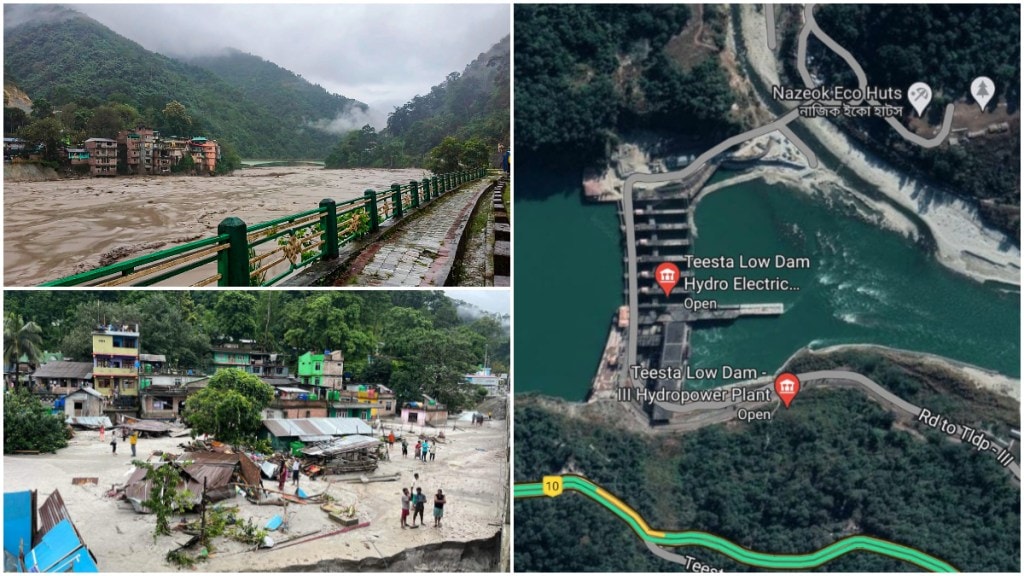In October, devastating flash floods struck Sikkim which severely affected a village, as depicted in recent satellite imagery. The Teesta river overflowed, submerging a significant part of the village and resulting in the loss of over 30 lives, leaving numerous individuals missing and devastating livelihoods.
Triggered by a cloudburst, the South Lhonak glacial lake breached, releasing excess water into the Teesta river downstream. The situation worsened with additional water released from a nearby dam, intensifying the flood’s impact on Chungthang village situated along the riverbanks.
University of Leicester’s earth observation experts released revealing photos portraying the flood’s destruction. Before-and-after satellite images display Chungthang village’s pre-flood intactness alongside the Teesta III dam. However, on October 4, the dam collapsed due to the bursting glacial lake, as evident in imagery captured ten days post-flood, revealing a devastated landscape with collapsed infrastructure and submerged houses in debris.
Matthew Payne from the University of Leicester emphasizes the imagery’s significance in addressing climate change’s challenges, stressing the need for resilient infrastructure to withstand excessive rainfall. He highlights satellite data’s role in monitoring floods for relief efforts.
Experts attribute accelerated glacier melting from global warming to heightened water levels in Himalayan lakes, emphasizing the urgent requirement for early warning systems in these vulnerable areas. Studies had previously warned about the potential South Lhonak lake flooding due to its rapid expansion, lacking adequate preventive measures.
Reports from the Teesta III dam workers indicated that by the time orders to open floodgates arrived, it was too late, resulting in the infrastructure’s collapse. Sikkim harbors numerous glacial lakes, with approximately 20 at risk of bursting, necessitating proactive measures to avert future disasters.
The tragedy in Sikkim underscores the pressing need for strategies to mitigate climate-induced catastrophes and the necessity for timely preventive measures in vulnerable regions to minimize future risks.


